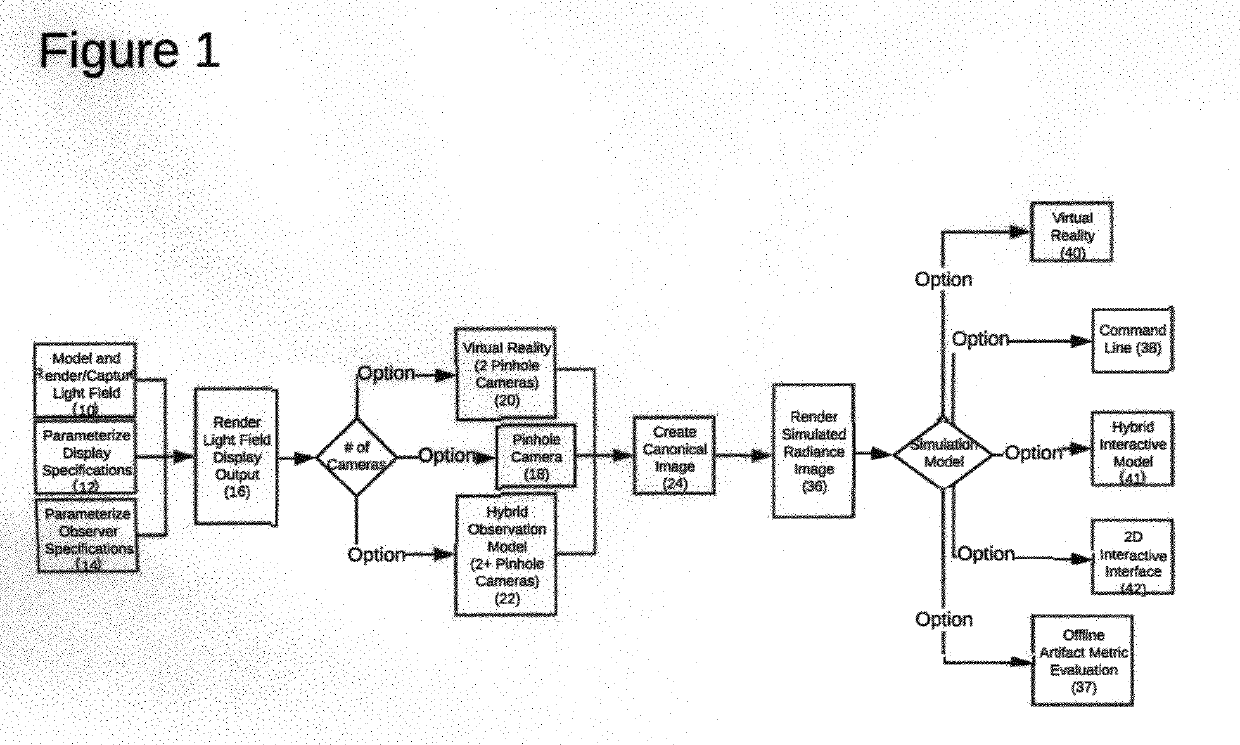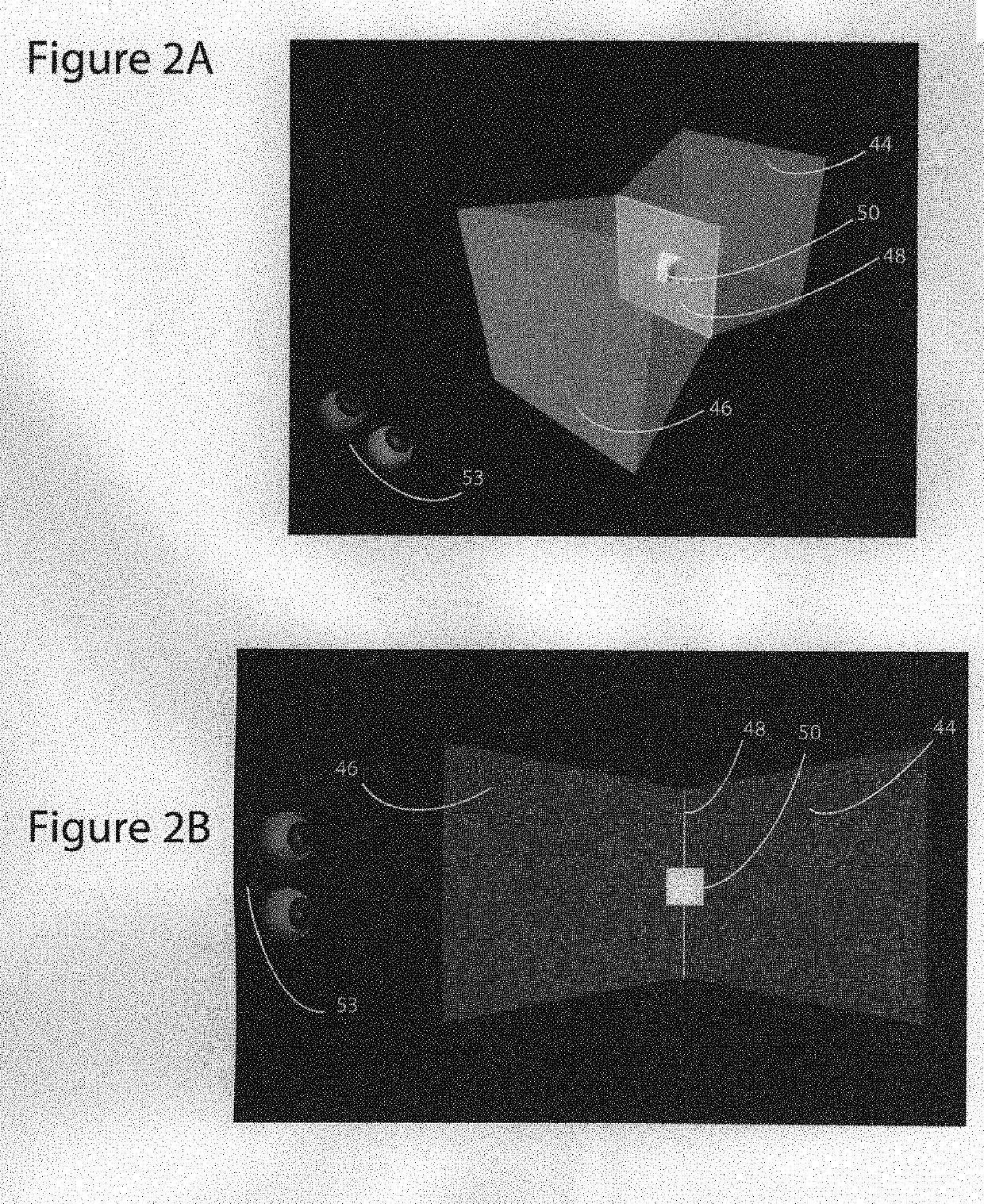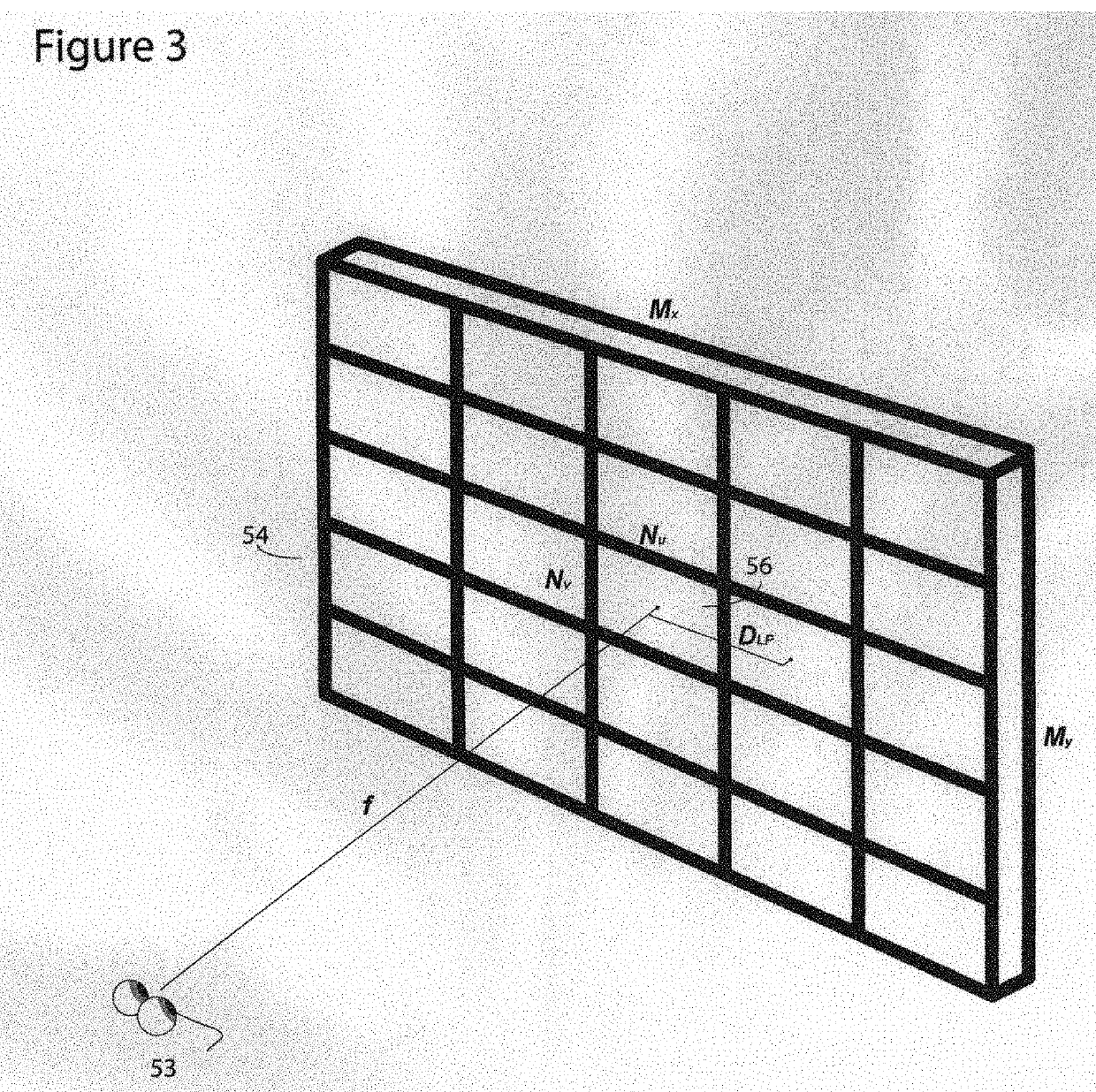High-Performance Light Field Display Simulator
a light field display and simulator technology, applied in the field of computer-aided simulation methods, can solve the problems of computational intensiveness, physical light field displays and their viewing experience, and inability to provide realistic simulations, etc., and achieve the effect of robustness, fast and versatil
- Summary
- Abstract
- Description
- Claims
- Application Information
AI Technical Summary
Benefits of technology
Problems solved by technology
Method used
Image
Examples
example 1
Light Field Display Evaluation Using VR 3D
[0143]The following illustrative embodiment of the invention is not intended to limit the scope of the invention as described and claimed herein, as the invention can successfully implement a plurality of system parameters. Consider the case of providing a virtual reality based light field display simulator. A light field is generated by rendering a 3D scene using light field-based rendering techniques known to the prior art. In this illustrative embodiment, the rendering of a 3D scene in (10) (FIG. 1) is created using a modified Unreal Engine 4™ with an added light field rendering capability. This method employs the Burnett et al. [2] oblique light field rendering technique so that the geometric objects can be staggered and positioned within the inner and outer frustum. This allows the objects to cover all areas of the display volume. The 3D scene can be visualized as a cube existing in 3D space as illustrated in FIGS. 2A / 2B. In other words...
example 2
Simulator to Evaluate Compression Artifacts
[0149]The type of light field datasets required to drive high-quality displays represent a significant increase in size relative to even high-end 2D displays. New techniques for rendering light fields must be developed to obtain the massive throughput required. Likewise, these massive data rates suggest the requirement for new light field compression techniques to efficiently transport such light field data. However, it is challenging to assess the quality of new rendering or compression techniques without a physical display.
[0150]Existing quality metrics cannot be applied to elemental images of a light field display. These methods do not consider the directional nature of an elemental image. Simulated views of a display based on a given light field dataset should be used and compared to make quality assessments of light field processing techniques.
[0151]In this exemplary embodiment, a light field display is simulated to evaluate light fiel...
PUM
 Login to View More
Login to View More Abstract
Description
Claims
Application Information
 Login to View More
Login to View More - Generate Ideas
- Intellectual Property
- Life Sciences
- Materials
- Tech Scout
- Unparalleled Data Quality
- Higher Quality Content
- 60% Fewer Hallucinations
Browse by: Latest US Patents, China's latest patents, Technical Efficacy Thesaurus, Application Domain, Technology Topic, Popular Technical Reports.
© 2025 PatSnap. All rights reserved.Legal|Privacy policy|Modern Slavery Act Transparency Statement|Sitemap|About US| Contact US: help@patsnap.com



